

Introduction
The attainment of the desired benefits from the District Medium Term Plan will depend on how successfully it is coordinated and implemented to achieve the set objectives.
This section of the District Development Plan identifies projects whose implementation will assist in the realisation of the goal of the Medium Term Plan. Development programmes and projects are carefully phased out year by year within the Three-Year period and these are reflected in the Annual plan indicating what action is to be taken, by whom and at what time.
Institutional Arrangements
Various institutions as given below have to work hard and those not in places have to be put in place to promote effective implementation and management of the plan.
District Assembly
The Assembly has the ultimate authority to seek the necessary approvals and implement the District Development Plan.
Executive Committee
The Executive committee should play a leading role to inform Assembly members about details of the Plan for them to be able to explain it in their Electoral Areas. This assignment is more important considering the executive committee as the implementing wing of the assembly.
Sub committees
The various sub-committees in place, especially the following should be strengthened:
- Development Planning Sub- Committee.
- Social Services Sub-Committee.
- Works Sub-Committee.
- Finance and Security Sub-Committee
- Songhor Sub-Committee.
The Development Planning Sub-Committee in particular should have the right personnel with the knowledge, experience and skills in various aspects of development planning and management. This committee should meet on regular basis to review the development process at each stage.
Departments of the District Assembly
- It is recommended that the other Decentralized Departments that are not present in the District should be established as soon as possible. Other departments needed to be represented in the district include Population Council, Rural Housing, Parks and gardens, Highways, national youth council, Ghana library board amongst others.
- Efforts should be made to attract qualified staff as well as retained them.
- Heads of Departments should meet regularly to discuss and co-ordinate their implementation strategies, especially those of expanded DPCU members.
Chiefs/Opinion Leaders and Traditional Authorities
The Assembly should inform Chiefs and Traditional Authorities including landowners, about their roles in implementing the Plan, for example in organizing durbars, educating their subjects, releasing lands etc.
NGO’s CBO’s and the Private Sector
The District Assembly should co-ordinate the participation of development associations, Pressure Groups, NGO’s, CBO’s and the private sector in implementing the Plan. This is to ensure judicious utilization of human, financial and material resources.
Approval of the Plan
As required by the Local Government Act 462, 1993; the District Assembly after approving the Plan should submit it through the Regional Co-ordinating Council to the National Development Planning Commission for Approval and integrated into the Regional and National Plans.
1. This will facilitate allocation and release of funds.
2. It will also establish confidence in the Plan by NGO’s, Private Sector, International Donors and Departments.
Marketing the Plan
In order to win support for the Plan, it has to be marketed at various levels for people to know what to expect from the Plan and what is expected of them towards its implementation.
District Assembly Level
The Development Focus, Objectives and Development Proposals within the Plan should be made to all Assembly Members and Officers of Department.
1. They should in turn educate the public about the plan.
Town/Area Councils & Unit Councils
At the Town/Area Councils and Unit Committee level the members should be able to carry the message further to the people.
1. These could be done through durbars, seminars, and workshops.
2. Pressure groups in the district such as Chiefs, Youth Associations, Market Women, NGOs GPRTU etc should be
well informed about their roles and benefits to the society in general and to them in particular.
3. In all instances investment opportunities in the district should be highlighted.
Regional & national Levels
It is necessary to market the District Development Plan beyond its borders to serve as means of informing public officials and as a means of soliciting for material and financial support. At the Regional and National levels, Ministers, Heads of Department, Corporations etc whose support are needed have to be well informed about their roles and contributions through special submissions. Members of Parliament (MPs) for the area should be able to market the potentials of the district.
International Level
Presentations should be made to International Agencies and Financiers for their support. The Assembly should forge strong links with sister Districts, and Metropolitans in foreign countries.
Arangement for Funding
Central Government Sources
Funds from the Central Government would be the major source of financing the Plan. It is therefore necessary to satisfy condition necessary for release of funds especially the District Assembly Common Fund
District Sources
The District’s revenue base is not healthy to support developments as may be required. However it is believed that potentials are there to improve the revenue base of the district. It is necessary for the proposals to be implemented to increase the revenue as anticipated over the Plan period.
It is also recommended that expenditures be reviewed in order to analyze weaknesses in them. This should enable the Assembly to reduce its expenditures.
Other Sources Outside the District
As mentioned earlier, the District Assembly should co-ordinate all irregular funds from various sources outside the district. It is recommended that various organizations such as NGO’s Embassies, Companies, individuals etc are approached to support development effort in the district. Specific Projects should be prepared and submitted to such bodies for support. This should be well co-ordinate to achieve desired results.
Medium Term Projects 2006-2009
This section presents the projects that are to be implemented in the four -year Medium Plan, 2006-2009. The criteria adopted in selecting projects into the four Year Medium Term Plan include the following:-
1. Projects that supports the provision of the basic infrastructure.
2. Projects with low initial capital investment.
3. Projects that promote community participation and ownership.
4. Projects with quick returns to equity capital.
5. Projects which tend to help restructure the space economy and
6. Improve on both the built and natural environment.
7. Projects that will promote good governance
8. Projects that will create an enabling environment
9. Projects that will create employment
The District Medium Term Development Plan is not prepared in isolation of District Annual Budgets in mind. Therefore, the plan has been prepared bearing in mind the district budgetary allocation projected within the plan implementation period as can seen in annual action plans. The projects captured in the annual plans are the same projects captured in the annual budgets so that implementation can be easy and well coordinated.
These projects were selected with the active participation of all stakeholders at the grass root level (Town and Area Council, Unit Committee, NGOs, Civil Societies CBOs and the District Assembly)
The Programme of Action, Logical Frame work and Action Plan are indicated in table 42 of this report.
Implementation Plan
Introduction
The attainment of the desired benefits from the District Medium Term Plan will depend on how successfully it is coordinated and implemented to achieve the set objectives.
This section of the District Development Plan identifies projects whose implementation will assist in the realisation of the goal of the Medium Term Plan. Development programmes and projects are carefully phased out year by year within the Three-Year period and these are reflected in the Annual plan indicating what action is to be taken, by whom and at what time.
Institutional Arrangements
Various institutions as given below have to work hard and those not in places have to be put in place to promote effective implementation and management of the plan.
District Assembly
The Assembly has the ultimate authority to seek the necessary approvals and implement the District Development Plan.
Executive Committee
The Executive committee should play a leading role to inform Assembly members about details of the Plan for them to be able to explain it in their Electoral Areas. This assignment is more important considering the executive committee as the implementing wing of the assembly.
Sub Committees
The various sub-committees in place, especially the following should be strengthened:
1. Development Planning Sub- Committee.
2. Social Services Sub-Committee.
3. Works Sub-Committee.
4. Finance and Security Sub-Committee
5. Songhor Sub-Committee.
The Development Planning Sub-Committee in particular should have the right personnel with the knowledge, experience and skills in various aspects of development planning and management. This committee should meet on regular basis to review the development process at each stage.
Departments of the District Assembly
- It is recommended that the other Decentralized Departments that are not present in the District should be established as soon as possible. Other departments needed to be represented in the district include Population Council, Rural Housing, Parks and gardens, Highways, national youth council, Ghana library board amongst others.
- Efforts should be made to attract qualified staff as well as retained them.
- Heads of Departments should meet regularly to discuss and co-ordinate their implementation strategies, especially those of expanded DPCU members.
Chiefs/Opinion Leaders and Traditional Authorities
The Assembly should inform Chiefs and Traditional Authorities including landowners, about their roles in implementing the Plan, for example in organizing durbars, educating their subjects, releasing lands etc.
NGO’s CBO’s And The Private Sector
The District Assembly should co-ordinate the participation of development associations, Pressure Groups, NGO’s, CBO’s and the private sector in implementing the Plan.
This is to ensure judicious utilization of human, financial and material resources.
Approval of the Plan
1. As required by the Local Government Act 462, 1993; the District Assembly after approving the Plan should submit it through the Regional Co-ordinating Council to the National Development Planning Commission for Approval and integrated into the Regional and National Plans.
2. This will facilitate allocation and release of funds.
3. It will also establish confidence in the Plan by NGO’s, Private Sector, International Donors and Departments.
Marketing The Plan
In order to win support for the Plan, it has to be marketed at various levels for people to know what to expect from the Plan and what is expected of them towards its implementation.
District Assembly Level
The Development Focus, Objectives and Development Proposals within the Plan should be made to all Assembly Members and Officers of Department.
1. They should in turn educate the public about the plan.
Town /Area Councils And Unit Councils
At the Town/Area Councils and Unit Committee level the members should be able to carry the message further to the people.
- These could be done through durbars, seminars, and workshops.
- Pressure groups in the district such as Chiefs, Youth Associations, Market Women, NGOs GPRTU etc should be well informed about their roles and benefits to the society in general and to them in particular.
- In all instances investment opportunities in the district should be highlighted.
Regional And National Levels
It is necessary to market the District Development Plan beyond its borders to serve as means of informing public officials and as a means of soliciting for material and financial support. At the Regional and National levels, Ministers, Heads of Department, Corporations etc whose support are needed have to be well informed about their roles and contributions through special submissions. Members of Parliament (MPs) for the area should be able to market the potentials of the district.
International Level
Presentations should be made to International Agencies and Financiers for their support. The Assembly should forge strong links with sister Districts, and Metropolitans in foreign countries.
Arrangement For Funding
Central Government Sources
Funds from the Central Government would be the major source of financing the Plan. It is therefore necessary to satisfy condition necessary for release of funds especially the District Assembly Common Fund
District Sources
The District’s revenue base is not healthy to support developments as may be required. However it is believed that potentials are there to improve the revenue base of the district.
It is necessary for the proposals to be implemented to increase the revenue as anticipated over the Plan period.
It is also recommended that expenditures be reviewed in order to analyze weaknesses in them. This should enable the Assembly to reduce its expenditures.
Other Sources Outside The District
As mentioned earlier, the District Assembly should co-ordinate all irregular funds from various sources outside the district. It is recommended that various organizations such as NGO’s Embassies, Companies, individuals etc are approached to support development effort in the district. Specific Projects should be prepared and submitted to such bodies for support. This should be well co-ordinate to achieve desired results.
Medium Term Projects 2006-2009
This section presents the projects that are to be implemented in the four -year Medium Plan, 2006-2009. The criteria adopted in selecting projects into the four Year Medium Term Plan include the following:-
1. Projects that supports the provision of the basic infrastructure.
2. Projects with low initial capital investment.
3. Projects that promote community participation and ownership.
4. Projects with quick returns to equity capital.
5. Projects which tend to help restructure the space economy and
6. Improve on both the built and natural environment.
7. Projects that will promote good governance.
8. Projects that will create an enabling environment.
9. Projects that will create employment
The District Medium Term Development Plan is not prepared in isolation of District Annual Budgets in mind. Therefore, the plan has been prepared bearing in mind the district budgetary allocation projected within the plan implementation period as can seen in annual action plans. The projects captured in the annual plans are the same projects captured in the annual budgets so that implementation can be easy and well coordinated.
These projects were selected with the active participation of all stakeholders at the grass root level (Town and Area Council, Unit Committee, NGOs, Civil Societies CBOs and the District Assembly). The Programme of Action, Logical Frame work and Action Plan are indicated in table 42 of this report.
As indicated earlier, planning is a problem solving model that aims at designing appropriate interventions to ameliorate lingering societal problems in order to foster the socio-economic independence of the poor. The process assumes a cyclical approach and identical of the approach is the implementation of discreet actions of programmes.
The identification of development goal, objectives, and strategies does not end the planning process. These efforts constitute the theoretical aspects of planning. What constitutes the real physical action is the implementation of activities designed from the strategies. It has been said that, planning that disregards the question of implementation languishes as an academic irrelevancy; it may be right but not relevant; correct but not useful. The main aim of this chapter is to therefore, formulate activities which will assist to surmount the problems identified earlier. The implementing agencies, cost as well as the indicators of all these activities have also been identified.
Composite Programme of Action (PoA)
The activities have been categorized according to the broad based thematic areas of the district, which are also in line with the thematic areas of the Medium Term Development Framework. Physical projects dominate, taking close to 80 per cent of the total number of activities earmarked for implementation. Again, what has become known of the activities is the dominance of the Agriculture sector. The focus of District as well as government is the modernization of agriculture for increased productivity.
The challenge which is likely to unfold during the implementation process however, will be the inadequacy of funds. From the tables below, it will be realized that, there is going to be pressure on the Common Fund, which implies that, if stringent measures are not taken to mobilize funds from other sources, some projects will not see the limelight; because the Common Fund cannot implement all these interventions as expected.
It is therefore important to development appropriate marketing techniques to able to sell out the development plan to Development Partners as a way of soliciting for their financial and technical support. The engagement of local stakeholders is also crucial and extremely imperative.
Date Created : 11/14/2017 5:00:58 AM
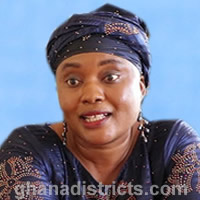





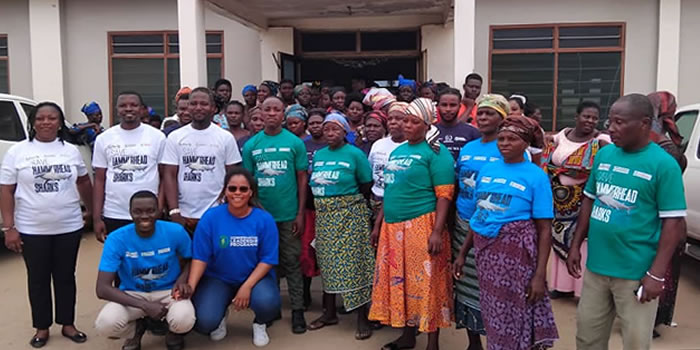
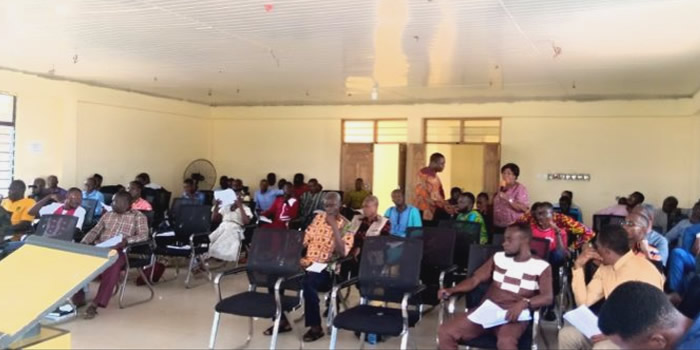
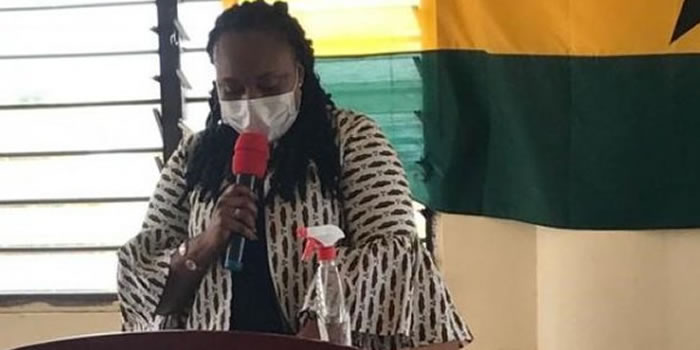
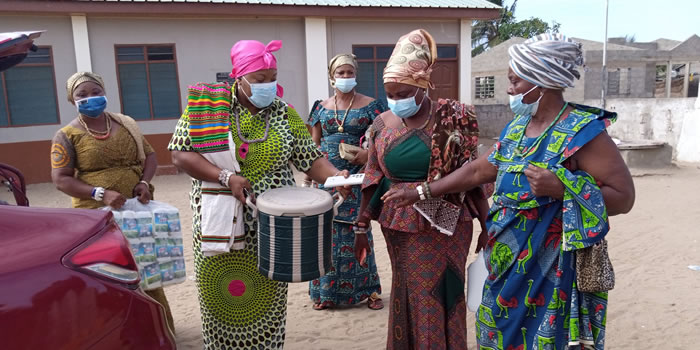


 facebook
facebook
 twitter
twitter
 Youtube
Youtube
 +233 593 831 280
+233 593 831 280 0800 430 430
0800 430 430 GPS: GE-231-4383
GPS: GE-231-4383 info@ghanadistricts.com
info@ghanadistricts.com Box GP1044, Accra, Ghana
Box GP1044, Accra, Ghana